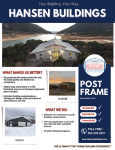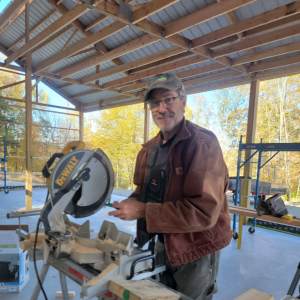New! The Pole Barn Guru’s mailbox is overflowing with questions. Due to high demand, he is answering questions on Saturdays as well as Mondays.
Welcome to Ask the Pole Barn Guru – where you can ask questions about building topics, with answers posted on Mondays. With many questions to answer, please be patient to watch for yours to come up on a future Monday or Saturday segment. If you want a quick answer, please be sure to answer with a “reply-able” email address.
Email all questions to: PoleBarnGuru@HansenPoleBuildings.com
DEAR POLE BARN GURU:I have a pole building reroofed with 1′ overhangs and am wondering if you think I should/need to use closures or something at the eave to seal the ribs. Thanks FREAKING IN FOSTORIA
DEAR FREAKING: I’d recommend the use of form fitted inside closures on top of the eave girt, if you have enclosed overhangs, or on top of the eave girt with open soffits. There should also be form fitted outside closures on top of the roof steel underneath the ridge cap. This combination will help to keep those nasty little flying critters from joining you inside of your building.
DEAR POLE BARN GURU:water drainage. BUDDY IN HOLLEY
DEAR BUDDY: Not entirely sure how to best assist you from the two word question. Assuming your new pole building is not going to be used as a home (in which case I would make entirely different recommendations using a raised wood floor), I’d approach this as for any pole building drainage solution. I would order columns long enough to get the required depth to extend below the frost line, plus make up for any grade change. After the columns were set, I’d bring in good compactable fill to get the elevation of the bottom of any future concrete slab above the highest point of the surrounding grade. Above the high side of the building, a French drain can be installed to divert any natural drainage. For those who are unfamiliar with French drains, it is when a trench is dug beyond the building perimeter, drain rock is placed in the bottom, then one or more rows of perforated four inch pipe are laid. After placing the pipe, the balance of the trench is filled with drain rock. I hope this helps – if not…please email me more information.








